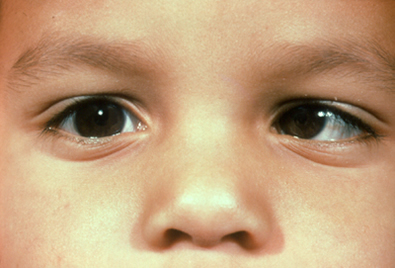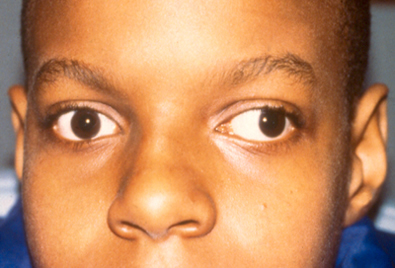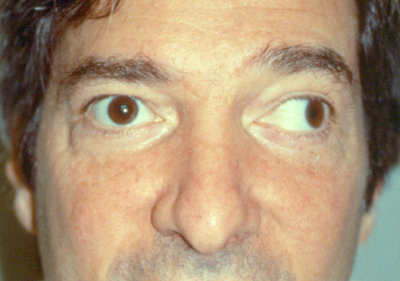Strabismus
What Is Strabismus?
Strabismus is the misalignment of the eyes due to muscular imbalance. This misalignment can take several forms: Esotropia (crossed eyes), exotropia (out-turned eyes) and vertical misalignment (hyper or hypotropia).
Each of your eyes has six (6) muscles that move the eye. Responding to signals from your brain, these muscles must work together to keep your eyes straight. If they are misaligned, you will have double vision and your depth perception will be affected.
Strabismus normally appears in childhood and may be both congenital and hereditary. Strabismus in children can also be caused by disease or an injury. Some infants can appear to have their eyes turning inward, when in fact the eyes are aligned properly, but the bridge of the nose is still wide. This is called pseudostrabismus. There are also folds in the inner eyelid skin in some children which can appear to be a deviation in alignment of the eyes. As the child physically grows this will subside, however, only an ophthalmologist can rule out if true strabismus is present.
At birth, a baby is not able to focus on or follow objects with his or her eyes. However, by about four months old, the eyes should appear straight and be able to focus on an object. By about six months, he or she should be able to focus on objects that are both near and far.
If you notice that your child is unable to focus on objects or if the eyes are either crossing or turning outward, you should have an examination by your pediatrician. If the pediatrician sees indications of strabismus, he or she will refer you to a pediatric ophthalmologist who specializes in treating strabismus.
The sooner treatment is initiated, the better the outcome. Because children’s brains are so adaptable, the muscular misalignment of strabismus can lead to amblyopia, a vision impairment in which the brain and eyes are not working in sync. In effect, the brain suppresses or “turns off” the blurry image that the eye is not seeing clearly
If strabismus is not treated childhood, or if the treatment is unsuccessful, strabismus can affect adults. In addition, an adult may develop strabismus following an accident or injury.
What Are the Symptoms of Strabismus?
Children may not be aware of the double vision that is associated with strabismus. In addition to noticing eyes that cross or turn outward, or appear to be out of vertical alignment, you may also notice your child tilting his or head to one side, or squinting.
If you develop strabismus as an adult, it is likely that you will be bothered by both double vision and a lack of depth perception.
How Is Strabismus Detected?
Strabismus is detected during a comprehensive eye examination. Special tests including the Krimsky test and prism testing will be used to determine the degree of misalignment of the eyes.
How Is Strabismus Treated?
A child will not “outgrow” strabismus, and it should be treated early to avoid a lifetime of vision problems. Depending on the severity, your ophthalmologist may recommend one or more of the following treatments:
- Eyeglasses to improve focusing
- Eyedrops or ointment
- Patching one eye
- Intramuscular injections to weaken the stronger muscles
- Eye exercises to strengthen the weaker muscles
As a last-resort treatment, surgery to straighten the eyes may be indicated.
If your child is diagnosed with strabismus, you will play the most critical role in his or her vision correction. Children often don’t like wearing glasses or eye patches and may also resist doing his or her eye exercises. As the parent, you must ensure that your child wears the patch to prevent a lifetime of vision problems. While it may not be easy, protecting long term vision will be well worth your efforts.
If you are an adult with strabismus, surgery will likely be required to improve the alignment of your eyes. The type of surgery will depend upon the severity of the misalignment.
Primary Eye Care Specialists at Kadrmas Eye Care New England
Meet our optometrists who specialize in primary eye care and general eye health:



